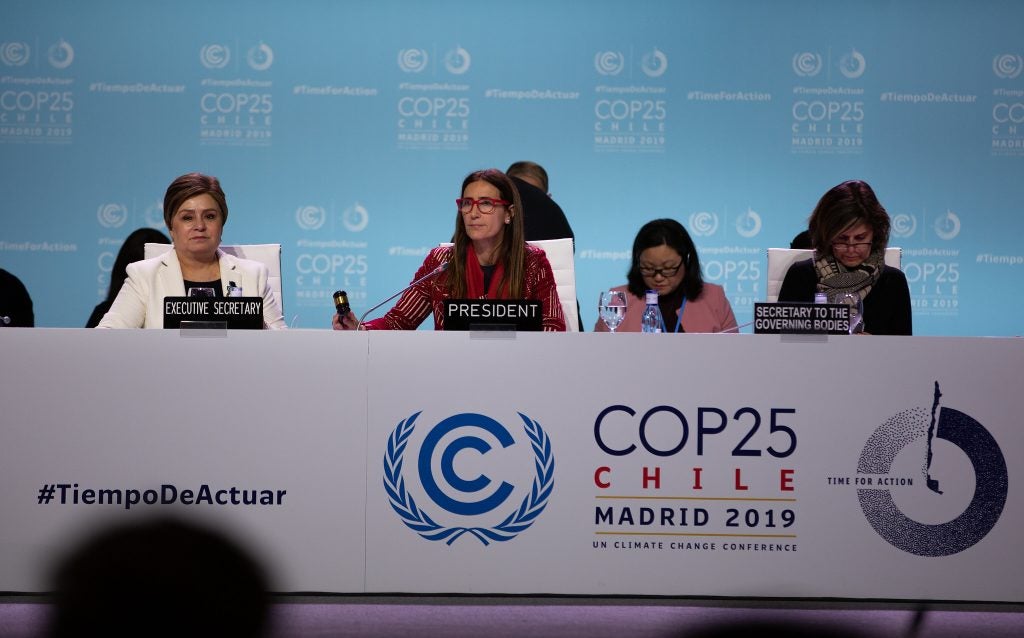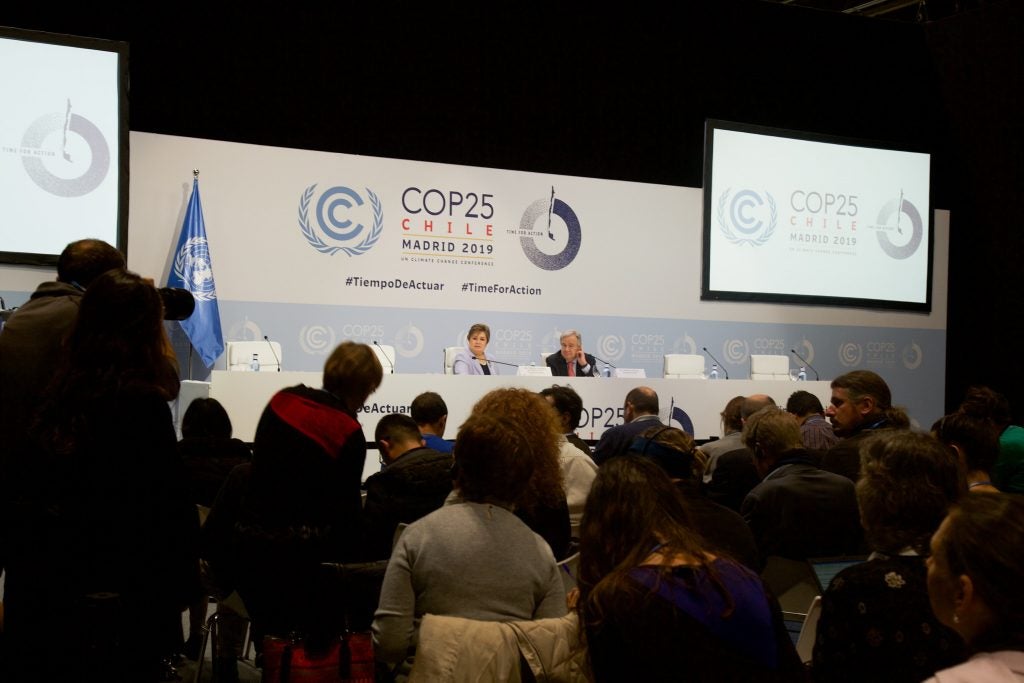
Midnight COP 25 plenary on Dec. 14 in Madrid. UNclimatechange via Flickr.
At just before 2:00 pm Sunday afternoon in Madrid, at a sprawling conference center on the outskirts of the city, a new record was set — and not an enviable one. That’s when the gavel finally fell on COP 25 — the 25th meeting of the Conference of the Parties to the UN Framework Convention on Climate Change — making it the longest COP in history, as it extended nearly 44 hours past its scheduled end.
Even with all that extra time, however, negotiators from 197 Parties were unable to reach agreement on virtually anything of real consequence, including one of the issues that topped the conference agenda: guidance for promoting the integrity of international carbon markets, in particular by ensuring consistent and robust accounting of emissions reductions transferred among countries.
While that failure is widely recognized, the outcome also offers three key implications for how markets can move forward.
- First, negotiators came surprisingly close to a good deal. That provides a foundation for negotiators to build on next year – although it’s not at all clear that having failed two years in a row, the third time will be the charm.
- Second, countries that are serious about markets don’t need to wait for the UN to provide guidance: they can and should move ahead to set their own rules.
- Third, the failure to reach agreement puts the Kyoto Protocol’s offset program (known as the Clean Development Mechanism) on shaky legal ground – something that decision makers at the UN’s aviation agency, ICAO, should heed.
How markets can help drive ambition
Markets may seem like a surprising headline topic for an international climate negotiation. But they are a central, if underappreciated, tool to make faster, deeper cuts in climate pollution — which is desperately needed, given the growing gap between the world’s current emissions trajectory and where we must go to meet the Paris Agreement’s objective of limiting warming to well below 2 degrees Celsius.
The Paris Agreement expressly recognizes, in its Article 6, that carbon markets provide a critical tool to enhance ambition. Market-based international cooperation enables countries to do more together than they could on their own. Economic analysis by EDF shows that carbon markets could achieve nearly double the emissions reductions relative to current Paris Agreement commitments, at no extra cost. The current nationally determined commitments (NDCs) are nowhere near ambitious enough to meet the objectives of the Paris Agreement, and we need all the tools in the box to avoid climate catastrophe.











